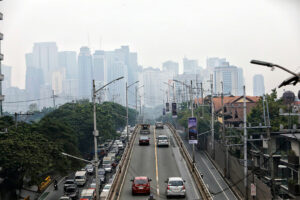S&P slashes PHL growth forecast

By Keisha B. Ta-asan, Reporter
THE PHILIPPINE ECONOMY will likely expand by just 5.2% this year as high inflation and the lagged impact of the central bank’s aggressive monetary tightening dampen growth, S&P Global Ratings said.
The debt watcher’s latest Philippine gross domestic product (GDP) growth estimate for this year is lower than its 5.9% forecast given in June.
This is also below the government’s growth target of 6-7% for 2023, and much slower than the 7.6% GDP expansion in 2022.
“Growth this year will be weaker than in 2022, but our outlook remains broadly favorable,” S&P said in a report. “We lowered (our forecasts) for Hong Kong, the Philippines, Singapore, Thailand and, notably, Vietnam.”
S&P’s lower forecast comes after Philippine GDP grew by a weaker-than-expected 4.3% in the second quarter. In the first half, GDP expanded by 5.3%.
For 2024, S&P raised its GDP projection to 6.1% from 5.9% previously. However, it lowered its growth forecast for 2025 to 6.2% from 6.6%.
Meanwhile, the credit rater expects inflation to average 5.8% this year, in line with the Bangko Sentral ng Pilipinas’ (BSP) revised full-year forecast.
It also sees inflation easing to 3.2% in 2024, slightly below the BSP’s 3.5% forecast.
According to S&P, core inflation has eased in Asia-Pacific economies, including the Philippines. But recent spikes in international prices of oil and food, especially rice, were reflected in the higher headline inflation in August.
“A fuller picture of the effect will emerge in coming months, depending on the evolution of global prices and government policies (an export ban on rice in India, the world’s largest rice exporter, contributed significantly to the increase in rice prices in Asia),” it said.
The debt watcher also noted that the El Niño weather pattern may likely persist until 2024, which will lead to weaker agricultural activity in the region and potentially higher food prices.
Headline inflation quickened for the first time in seven months in August to 5.3% from 4.7% in July. Meanwhile, core inflation further eased to 6.1% year on year in August from 6.7% in July.
“The recent rise in oil and food prices hasn’t yet led to a renewed worsening of external deficit trends in the Asian economies that ran current account deficits in 2022: India, New Zealand, the Philippines, and Thailand. Earlier declines in oil and commodity prices helped to reduce those deficits,” S&P said.
In the first semester, the country’s current account deficit stood at $8.2 billion (-4% of GDP), 32.2% lower than the $12.1-billion deficit (-6.1% of GDP) in the same period last year.
The BSP projects the current account deficit to reach $11.1 billion (-2.5% of GDP) for this year, before narrowing to $10.3 billion (-2.1% of GDP) in 2024.
“In New Zealand, the Philippines, and Thailand, rising tourism revenues are also making a difference. However, the new rise in oil and food prices will put pressure on the external deficit data in coming months,” the credit rater said.
Bank of the Philippine Islands (BPI) Lead Economist Emilio S. Neri, Jr. said the Philippines cannot rule out the debt watcher’s lower growth outlook for this year.
“We are a bit more optimistic than S&P though: while we think that making up for public sector underspending in the second quarter will be an uphill climb, we are likely to see improvements in government spending in the second half of 2023 to bring growth to the 5.5% to 6% range,” Mr. Neri said in a Viber message.
Aside from higher interest rates, he noted that growth has also been dampened by persistent inflation, government underspending and possible erosion of investor confidence due to geopolitical issues.
George N. Manzano, an economist at the University of Asia and the Pacific, said it will not be easy for the Philippines to achieve its 6-7% GDP growth target this year.
“The economy has to grow by 6.6-6.7% in the second half to hit the lower bound 6% government target,” he said.
“At the rate that inflation is increasing, with the food and energy prices, it may hamper demand and investment, especially if the BSP will hike interest rates further in the year. Thus, the burden will be on government spending to spur growth,” he added.
Last week, the BSP kept its key interest rate for a fourth straight meeting at 6.25%. From May 2022 to March 2023, the Monetary Board raised borrowing costs by 425 basis points (bps).
In the report, S&P expects the BSP’s policy rate to reach 6.5% this year. This assumes that the Monetary Board may still hike by 25 bps in the fourth quarter.
By end-2024, S&P expects the Monetary Board to cut its key rate to 5.75%.
The credit watcher also noted that they do not see any policy easing in the near term due to challenges in inflation and uncertainties from the US Federal Reserve.
“Most Asia-Pacific central banks consider the recent currency weakening as manageable but given renewed increases in global energy and food prices, they would be reluctant to see large currency depreciation stoke so-called imported inflation,” it said.
BSP Governor Eli M. Remolona, Jr. earlier said that the Monetary Board may raise policy rates again at its next meetings on Nov. 16 and Dec. 14 if inflationary pressures persist.




